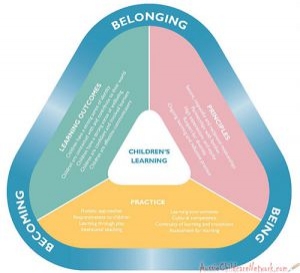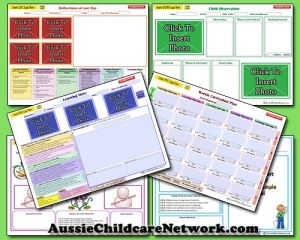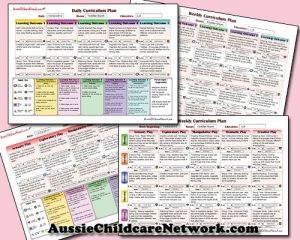The following is a list of critical reflections that can help educators evaluate and continuously improve their outdoor environments in early childhood settings. These prompts are designed to inspire a thoughtful review of the outdoor environment, ensuring that it remains dynamic, inclusive, and conducive to holistic development.
Safety and Risk Management:
- Reflection: Does the outdoor space balance safety with opportunities for managed risk-taking?
- Consider: Are there clearly defined safety protocols, and do children have the opportunity to challenge themselves within safe boundaries?
Space Organization and Layout:
- Reflection: How does the layout of the outdoor area support diverse modes of play and learning?
- Consider: Are there distinct zones for active play, quiet reflection, and group collaboration that allow children to move freely and purposefully?
Natural Elements and Sensory Stimulation:
- Reflection: In what ways are natural features (plants, water, terrain textures) utilized to provide rich sensory experiences?
- Consider: Does the environment offer varied stimuli that engage children’s tactile, auditory, and visual senses?
Inclusivity and Accessibility:
- Reflection: Does the outdoor environment accommodate all children, including those with additional needs or disabilities?
- Consider: Are pathways, play equipment, and seating areas easily accessible, and do they celebrate diverse cultural backgrounds?
Child Engagement and Ownership:
- Reflection: How does the outdoor space foster a sense of ownership and autonomy in children?
- Consider: Do children have opportunities to contribute to the design or setup of the area, encouraging decision-making and creativity?
Sustainability and Environmental Education:
- Reflection: Is the outdoor environment designed to promote environmental stewardship and sustainability?
- Consider: Are there elements that encourage interaction with nature and lessons on ecological awareness, such as seasonal changes or natural cycles?
Adaptability Across Seasons:
- Reflection: How versatile is the outdoor space in catering to different weather conditions and seasons?
- Consider: Does the environment include features or adaptable areas that remain engaging year-round, challenging children to notice changes in nature?
Integration of Learning and Play:
- Reflection: How effectively are outdoor play and curricular learning integrated?
- Consider: Does the space offer opportunities for experiential learning, problem-solving, and imaginative exploration that support physical, cognitive, and social development?
Maintenance and Upkeep:
- Reflection: What measures are in place to ensure the outdoor environment remains safe, engaging, and well-maintained?
- Consider: Is there a regular review process to refresh resources, repair equipment, and adapt the space based on children’s evolving interests?
Community and Family Involvement:
- Reflection: How does the outdoor setup reflect or incorporate input from families and the local community?
- Consider: Are there visible contributions from community members, such as cultural displays or collaborative garden spaces, that help children connect classroom learning with the wider world?
How are children spontaneously interacting in the space?
- Consider what kinds of interactions occur when children choose their own play. Reflect on how the arrangement of materials and natural features invites social collaboration and independent exploration.
What elements in the outdoor space spark wonder and curiosity?
- Think about which natural components—such as unusual plants, textures, or sounds—encourage children’s inquiry. How do these elements stimulate questions and imaginative exploration?
In what ways are loose parts and natural materials being utilized?
- Reflect on whether available materials support open-ended exploration and problem-solving. What adjustments might enable children to use these items more creatively?
How does the space balance opportunities for managed risk-taking with safety?
- Ask yourself if there are clear boundaries that allow children to challenge themselves while remaining secure. Are there features that help them build resilience and decision-making skills?
How do seasonal changes influence the learning experience outdoors?
- Consider whether the environment responds effectively to different weather conditions. How can the space be adapted or celebrated across seasons to enhance learning?
What design features foster both group interaction and individual exploration?
- Reflect on the layout—are there defined zones for quiet reflection, active play, and collaborative projects? How might modifications support a broader range of learning styles?
How is the outdoor space reflective of the cultural and community values of the children?
- Consider whether local stories, traditions, or community contributions are visible and celebrated. How can the environment be enriched to honor the diverse backgrounds of the children?
What role do educators play in mediating outdoor experiences?
- Reflect on your presence in the space: Are you facilitating meaningful interactions without taking over the play? How might your involvement be adjusted to extend learning moments naturally?
How are sensory experiences outdoors – such as sounds, smells, and textures – supporting learning?
- Think about which senses are engaged and whether the environment provides a balanced, immersive experience. How can sensory stimuli be enhanced to deepen children’s engagement?
What opportunities are there for integrating outdoor experiences with indoor learning?
- Consider ways that observations and activities from the outdoor space can inform curricular planning and classroom discussions. How might these links enhance overall educational continuity?
How do children express their creativity and problem-solving skills in this environment?
- Reflect on moments when children direct their own learning in unexpected ways. What specific aspects of the environment support or constrain these expressions?
How does the design of the space encourage physical movement and exploration?
- Evaluate whether pathways, open areas, and play equipment support varied physical challenges. Are there areas that could be redesigned to encourage more dynamic movement or balance?
What improvements or modifications does the space need based on recent observations?
- Consider feedback from both children and educators. How can adjustments be made to better accommodate evolving interests or needs?
How are transitions between outdoor and indoor learning managed?
- Reflect on the fluidity of these transitions. What strategies help maintain children’s engagement and support their comfort levels as they move between the two settings?
How are moments of conflict or challenge managed in the outdoor setting?
- Explore the strategies used to handle disagreements or safety concerns. Do these approaches help resolve issues constructively while teaching social and emotional skills?
How does the outdoor space encourage healthy risk assessment and self-regulation?
-
- Reflection: In what ways do children encounter challenges that prompt them to gauge risk and adapt their behavior? How can educators scaffold these moments to build confidence without compromising safety?
What unexpected uses of the outdoor area have emerged, and what do they reveal about children’s interests?
- Reflection: Consider how children repurpose elements of the space in creative ways. What does this say about their understanding of the environment and its potential for play?
How are weather variations and natural light leveraged as learning tools?
- Reflection: Reflect on how differing weather conditions, such as rain or bright sunlight, might offer unique sensory experiences or spark discussions about nature and climate.
How do changes in the outdoor environment throughout the day or season impact children’s moods and engagement?
- Reflection: Evaluate how shifts—like cooler mornings versus warm afternoons—affect participation. What opportunities exist to turn these variations into intentional learning moments?
In what ways does the outdoor setting foster environmental stewardship and a connection to nature?
- Reflection: Consider if and how the space inspires conversations about conservation, sustainability, or the natural world. How might you integrate activities that promote eco-awareness?
How effectively does the layout support both spontaneous and structured play?
- Reflection: Are there designated zones for free exploration as well as areas designed for planned activities? How can the balance between the two be optimized to meet diverse learning objectives?
How does the outdoor design contribute to physical development and coordination?
- Reflection: Reflect on whether the arrangement encourages climbing, running, balancing, or other motor skills. What modifications might further enhance children’s physical engagement?
What role do natural landscapes and features play in sparking imaginative storytelling?
- Reflection: Consider whether elements like trees, rocks, or garden beds serve as prompts for narrative play. How can educators support and extend these creative journeys?
How does the space support quiet reflection and mindfulness amid active play?
- Reflection: Identify if there are serene spots where children can observe nature or simply unwind. How might these areas be enhanced to encourage both solitude and reflective thought?
What measures can be taken to better integrate cultural narratives within the outdoor space?
- Reflection: Think about how local heritage or family traditions might be represented—through art, story corners, or community gardens—to enrich the learning environment.
How do educators balance necessary maintenance with preserving the natural feel of the area?
- Reflection: Reflect on the tension between upkeep and allowing the space to evolve organically. How might regular updates or community input contribute to this balance?
In what ways can technology support documenting and sharing outdoor experiences?
- Reflection: Consider whether digital portfolios, photo journals, or even audio recordings are used to capture play moments. How do these tools contribute to ongoing reflective practice for educators and families?
How is feedback from children about the outdoor environment gathered and incorporated over time?
- Reflection: Reflect on the mechanisms in place for listening to children’s voices—through conversations, surveys, or creative expressions—and how these insights drive evolution of the space.
How do educators use outdoor experiences to bridge connections with indoor learning and vice versa?
- Reflection: Deliberate on ways to create seamless transitions that build on outdoor observations to inform indoor curriculum planning and further enrich children’s experiences.
How do moments of conflict or frustration outdoors become opportunities for learning and emotional development?
- Reflection: Examine how disagreements or challenges in the outdoor setting are handled constructively. What strategies help children transform conflicts into lessons in collaboration and self-regulation?
Further Reading
Benefits Of Outdoor Area
Designing Engaging Outdoor Learning Spaces
How To Achieve Quality Area 3
Creating Outdoor Spaces For Children In Early Learning Services
List Of Reflection Questions For The Learning Environment







 Here is the list of the EYLF Learning Outcomes that you can use as a guide or reference for your documentation and planning. The EYLF
Here is the list of the EYLF Learning Outcomes that you can use as a guide or reference for your documentation and planning. The EYLF The EYLF is a guide which consists of Principles, Practices and 5 main Learning Outcomes along with each of their sub outcomes, based on identity,
The EYLF is a guide which consists of Principles, Practices and 5 main Learning Outcomes along with each of their sub outcomes, based on identity, This is a guide on How to Write a Learning Story. It provides information on What Is A Learning Story, Writing A Learning Story, Sample
This is a guide on How to Write a Learning Story. It provides information on What Is A Learning Story, Writing A Learning Story, Sample One of the most important types of documentation methods that educators needs to be familiar with are “observations”. Observations are crucial for all early childhood
One of the most important types of documentation methods that educators needs to be familiar with are “observations”. Observations are crucial for all early childhood To support children achieve learning outcomes from the EYLF Framework, the following list gives educators examples of how to promote children's learning in each individual
To support children achieve learning outcomes from the EYLF Framework, the following list gives educators examples of how to promote children's learning in each individual Reflective practice is learning from everyday situations and issues and concerns that arise which form part of our daily routine while working in an early
Reflective practice is learning from everyday situations and issues and concerns that arise which form part of our daily routine while working in an early Within Australia, Programming and Planning is reflected and supported by the Early Years Learning Framework. Educators within early childhood settings, use the EYLF to guide
Within Australia, Programming and Planning is reflected and supported by the Early Years Learning Framework. Educators within early childhood settings, use the EYLF to guide When observing children, it's important that we use a range of different observation methods from running records, learning stories to photographs and work samples. Using
When observing children, it's important that we use a range of different observation methods from running records, learning stories to photographs and work samples. Using This is a guide for educators on what to observe under each sub learning outcome from the EYLF Framework, when a child is engaged in
This is a guide for educators on what to observe under each sub learning outcome from the EYLF Framework, when a child is engaged in The Early Years Learning Framework describes the curriculum as “all the interactions, experiences, activities, routines and events, planned and unplanned, that occur in an environment
The Early Years Learning Framework describes the curriculum as “all the interactions, experiences, activities, routines and events, planned and unplanned, that occur in an environment


